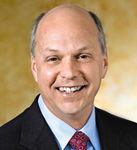Pharmacists are taking more direct patient care roles, survey finds
Fewer pharmacists than ever before are devoting their full time to dispensing medication.

Key Points
If it seems as if fewer pharmacists are spending 100% of their time on dispensing, it's true, according to the results of the latest pharmacy workforce study. Fewer pharmacists than ever before are devoting their full time to dispensing medication.

"We can't relate that number directly to our last report in 2004 because our methods have changed," Schommer said. "But my gut feeling is that both the percentage and the absolute numbers of pharmacists who are not dispensing at all is rising."
Pharmacy workforce surveys were last conducted in 2004 and 2000, Schommer said. The latest survey was detailed in the University of Minnesota publication "Innovations in Pharmacy," published earlier this year as "Pharmacist Contributions to the U.S. Health Care System." Funding for the project was provided by the Pharmacy Manpower Project and the American Pharmacists Association (APhA).

2009 respondents
Burns' confidence is based on the 2009 National Pharmacist Workforce Survey, which was mailed to a random sample of 3,000 pharmacists nationwide whose names were taken from a database of approximately 249,000 licensed pharmacists. Of the 3,000 surveys mailed, 2,667 were not returned by the U.S. Postal Service and were presumed to have been delivered to their addressees. Of the surveys delivered, 1,391 were returned, a usable response rate of 52.2%.
The analysis employed 2 continuous variables, Schommer said: the percentage of time spent in activities connected with the provision of medication and the percentage of time spent in activities connected with patient care.
Pharmacist activities
For purposes of the survey, provision of medication included dispensing and related activities such as product preparation, patient counseling, interacting with patients about the selection and use of over-the-counter products, and interacting with physicians and other professionals during the process of providing medication.
Patient care included assessing and evaluating patient needs connected with medication, monitoring and adjusting medication therapy, and other services provided as part of patient-care management.
Four other activities were included in the survey:
Analysis identified 5 segments, or clusters, of pharmacy practitioners: